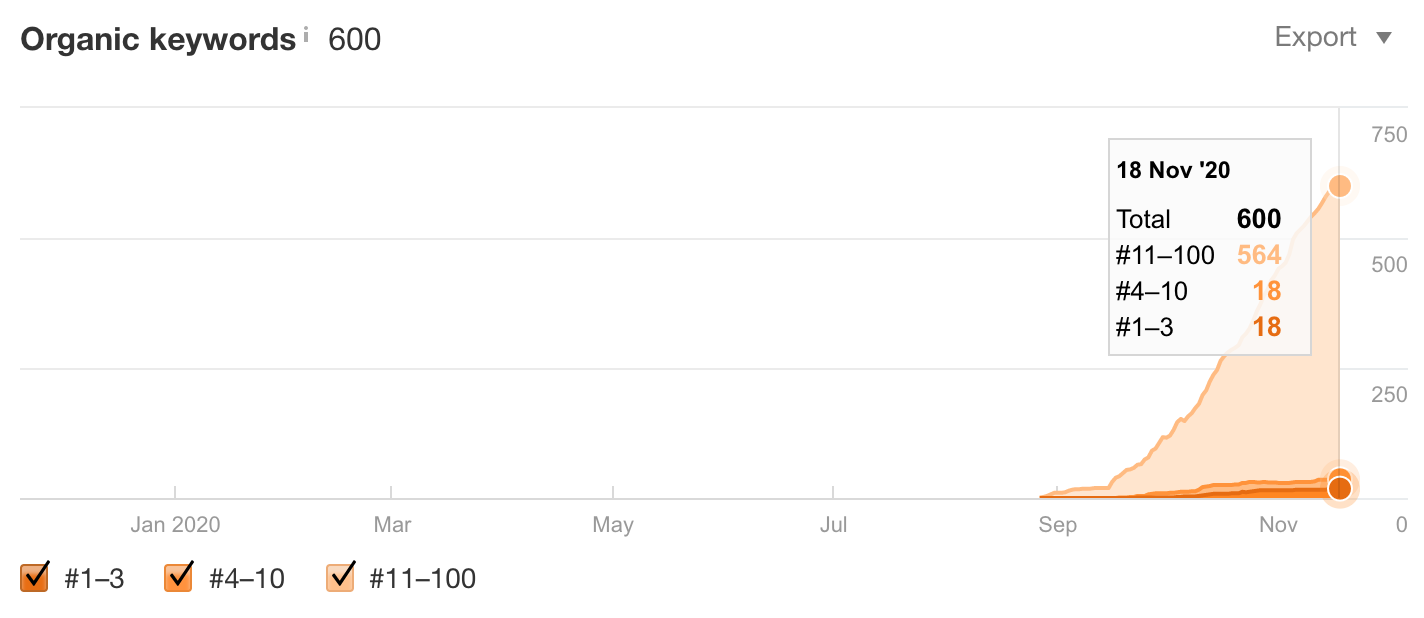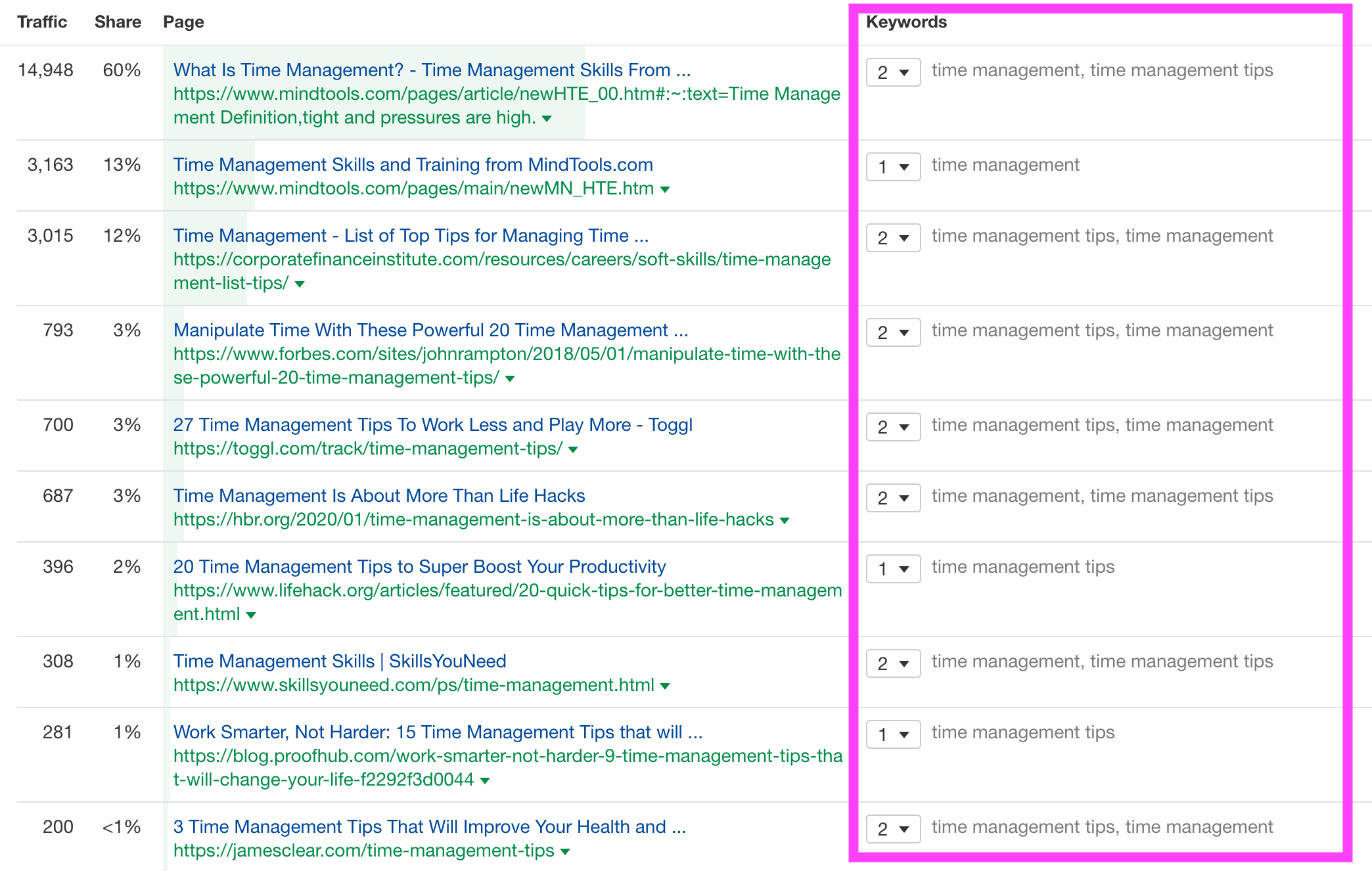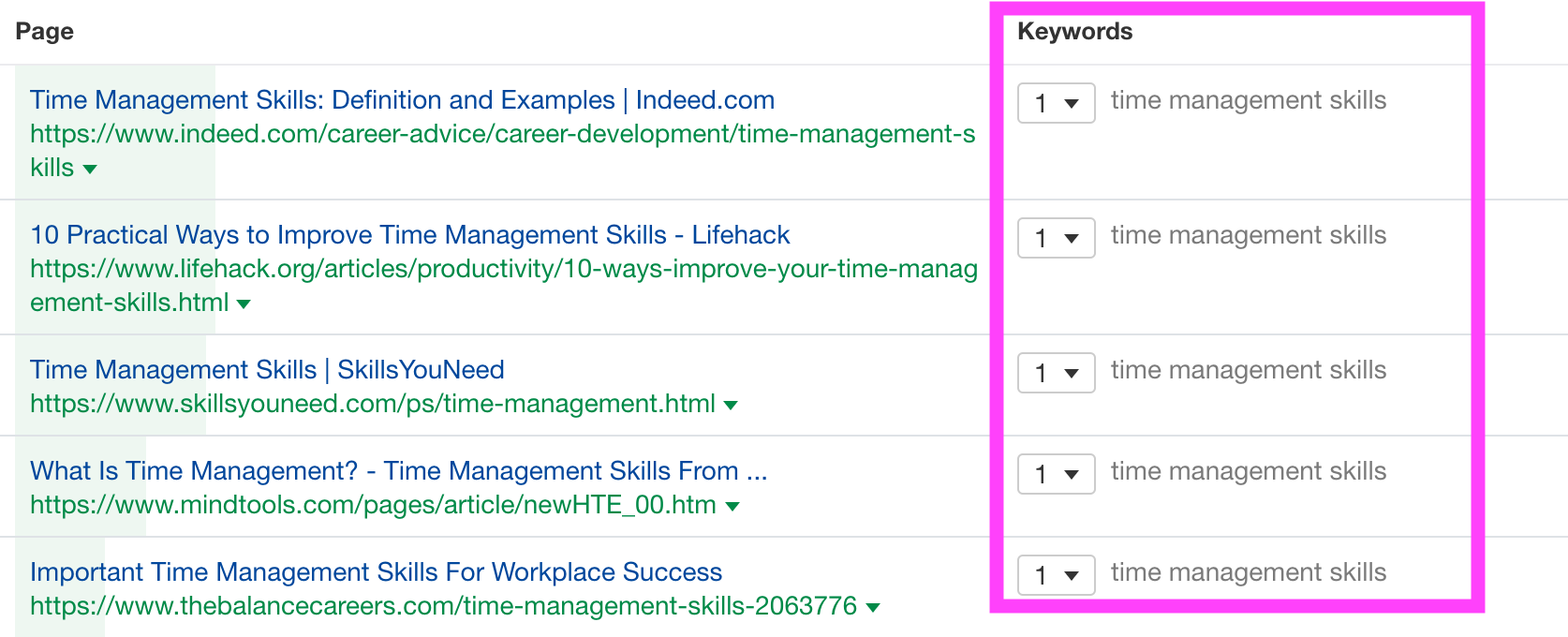It’s no secret; keywords are one of the pillars of a successful search engine strategy. They connect your website’s content with search queries that make them SEO 101.
Your goal is to ensure people have the best chance of finding your website, which means you want the copy of your pages to be filled with the words and phrases searchers are using.
But therein lies the rub: How do you know what keywords you should use? Some of them will obvious.
If you own a plumbing supply website, it’s safe to assume your content should include words like [faucet], [ball valve], and [pipe fitting]. But what about the keywords that aren’t so obvious?
And once you’ve identified the keywords you want to target, should you just start cramming them in wherever they fit? You could, but then you run the risk of cannibalizing your own pages or competing with them for the same keywords and phrases.
To avoid this and help make sure you’re providing the best answer to search intent, you need a plan.
Keyword mapping will help you not only identify your keyword phrases but also determine where they should go on your website.
In this piece, we’ll guide you through mapping out your keywords and implementing a strategy to ensure your pages are deemed relevant to search engines.
What Is Keyword Mapping?
Keyword mapping is the process of assigning each page to a target keyword cluster.
Google ranks based on specific URLs.
Each URL needs to be optimized and relevant for the target keywords to rank.
Today’s target keyword cluster normally consists of the main keyword (focus keyword) that clearly describes the page’s topic, as well as a series of keyword variations and supporting keywords.
Why Keyword Mapping Matters
There are several benefits to keyword mapping.
First is that it organizes your content effectively, which not only aids in Google’s understanding of how relevant this URL is for a search query but also makes it easier for your content creators to write and easier for readers to understand.
More than that, it helps you create and maintain an internal linking strategy.
Ideally, you want your pages to contextually link from one to another. This helps search engine crawlers index your pages while helping visitors find what they’re looking for.
Keyword mapping also provides you with an effective way to measure your SEO efforts. It will help alert you to problems with your SEO, allowing you to react faster.
Let’s look at an example: A software client of mine won page 1 with one of our Q4 target pages. The article was published in August 2020.
The main keyword is November, ranking in position two, and organic traffic is starting to pick up.
 Screenshot by author, January 2023
Screenshot by author, January 2023 Screenshot by author, January 2023
Screenshot by author, January 2023What do you think: How many supporting keywords and variations are ranking?
In short: There could be hundreds of supporting keywords ranking for your page.
 Screenshot by author, January 2023
Screenshot by author, January 2023On the left side, you can see the ranking position: 100 at the bottom and the best position (1) at the top.
Each line is one page on the same website. The line is the ranking development of that page over time.
In this chart, the ranking page is constantly switching. Google simply can not decide which page is most relevant.
So, pages keep coming in and out of the index without ever sticking.
This hurts your ranking changes and organic performance.
Don’t play hard to get.
Work on your keyword mapping and make it clear to Google which page they should rank for a target keyword.
Lastly, keyword mapping matters because Google is getting better and better at understanding search intent and the relevant subtopics needed to meet search intent.
Page 1 for [time management tips] is full of long-form, Wikipedia-esque articles covering all the subtopics in one guide.
Now that you know why you need to employ a plan, let’s dive into how to do keyword mapping.
A Step-By-Step Guide To Mapping Keywords
Keyword mapping is simple once you understand the process, but it does take a bit of time to research and implement.
1. Identify Your Keywords
The first thing you should do is identify the main keyword you want to rank for on each page within your site. This should be the answer to a specific query.
This seed keyword, as it’s sometimes known, can then be used to find a larger set of keywords.
Using a keyword research tool, use the focus keyword to identify all the words and phrases you’ll be mapping to your website.
Don’t forget to check out the keywords being used by your competition.
Prioritize keywords based on your overall keyword strategy.
2. Group Your Keywords
Once you’ve compiled your list of keywords, it’s time to start organizing them.
Begin by grouping words into buckets based on search intent. Your goal is to create a group of words that all answer the same question.
Select one of these as your main keyword while using the others as secondary ones.
These buckets will help you determine the structure of your site and create a logical path for visitors and search engine spiders to follow.
As you’re grouping your keywords, don’t forget about variants.
For example, if you’re optimizing a page with the focus keyword of [project management software], you will want to include [software for project management].
This is a good time to start thinking about potential URLs for pages.
Ideally, your URL will feature your main keyword. While this only plays a minor role in your search ranking, having keywords in the web address helps users understand what the page is about.
3. Map Your Keywords
Now it’s time to start building your keyword map. Start by outlining your site’s hierarchy in a logical manner.
After that, create a subdirectory with individual pages. Many people find it easiest to create a spreadsheet with multiple columns to keep things organized.
Take the primary keyword for a page and use it to create your page title, meta description, header tags, and other elements.
List the secondary and tertiary keywords in another column.
If you’re working on optimizing an existing site, you’ll probably want to include columns for an existing title, H1 tags, etc., and include recommended or updated versions next to them.
You can also add notes about body copy, word count, and images – if you find this helpful.
Once you’re done filling out this spreadsheet, double-check to make sure each page is unique from the others.
4. Optimize Your On-Page Content
While creating your keyword map, you will likely encounter some issues that should be addressed. This could include:
- Missing content or content that is not relevant.
- Technical issues that could be hurting your ranking.
- Internal linking opportunities.
- Multiple pages targeting the same query.
5. Keep Working On Your Keyword Map
Like almost everything related to search engine optimization, there is no finish line for keyword mapping.
You’ll want to revisit your map regularly, at least annually, if not once per month.
As your website grows, you’ll need to refer to this document to ensure you’re not duplicating content.
Changes in technology, your industry, or target behavior could impact the relevancy of your keywords, so make sure you’re keeping an eye on this.
You may also discover new or better terms that need to be added.
How To Avoid Keyword Cannibalization
It’s important to avoid keyword cannibalization or competing with your own pages for search traffic.
So, what if you have a bunch of similar keywords and subtopics and are unsure whether they should be mapped to the same page or different ones?
The qualitative way (without tools) to figure this out is to review Page 1.
For example, if you’re targeting the query [project management tools] and you have a page with content focused on this keyword, while another covers [project management software], and a third about [tools for project managers], these pages are all going to steal traffic from the others.
Go into an incognito mode in your browser and compare the search results pages for the different keyword variations.
If you find the same or very similar search results, it means that you should be mapping the keyword to the same page.
If the search results look radically different and your competitors have clearly distinct pages that cover the different keyword variations, that indicates to you that they should be mapped to different URLs.
You can also do this by using an SEO tool like Ahrefs.
Ahrefs’ Keyword Explorer has a function named “Traffic Share By Pages.”
Let’s enter two very similar target keywords into Keyword Explorer:
- [time management]
- [time management tips]
You can see that eight of the first 10 search results target these two keywords on the same page – as should you.
 Screenshot from Ahrefs, January 2023
Screenshot from Ahrefs, January 2023Now, let’s check for:
- [time management hacks]
- [time management skills]
 Screenshot from Ahrefs, January 2023
Screenshot from Ahrefs, January 2023You can see that pages about [time management skills] do not tend to rank for [time management hacks].
This indicates that you should be creating two pages for the two topics.
Probably, the people looking for hacks and shortcuts are different, with different needs and search intent from those looking to master the skill.
In short: Meeting search intent + great keyword mapping = targeted pages with the best chances of ranking success.
Using Keyword Mapping For SEO
Regardless of what industry you’re performing search engine optimization in, it’s a competitive field. And that means you need to leverage every advantage you have to put your page at the top of SERPs.
Keyword mapping is a great way to maximize your efforts by getting and keeping all your content organized.
This prevents your pages from cannibalizing each other while ensuring that your team is all on the same page.
Building a keyword map takes a bit of time upfront, but it will save you lots of headaches and work on the backend – not to mention help you achieve better overall search rankings.
More Resources:
Featured Image: myboys.me/Shutterstock
